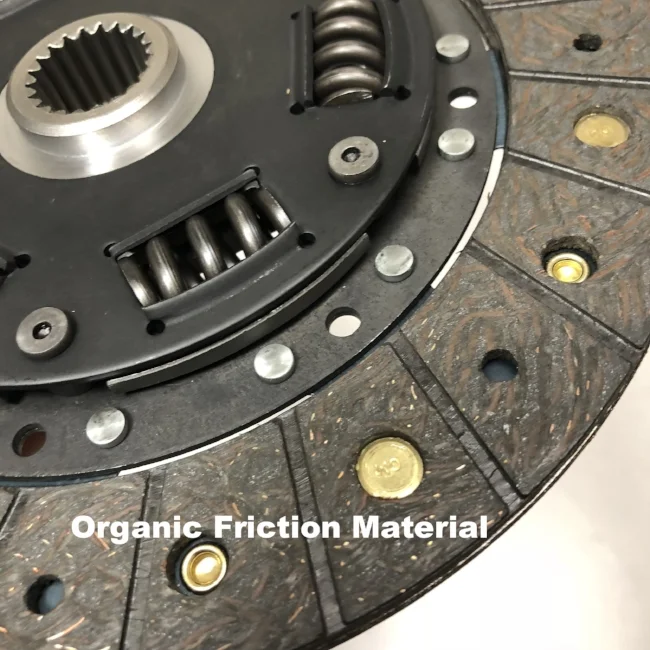The Lotus are getting older and racking up more mileage. Wear items like clutches have been blowing up from the early days thanks to abuse, high power, or just wearing out. We have run various clutches over the years and have formed some opinions. This Blog hopes to illustrate some of our findings.
FAILURE ON TRACK
At our recent track day weekend, one friend blew up his clutch. This Elise had seen 25+ track days since the clutch was installed. His original factory clutch lasted about the same time (25 track days). This 190hp car was being driven by an experienced driver who enjoys his car on the road and track. See the pictures below:

This pressure plate came apart and also did some damage to the trans housing as shown below:

INSPECTION
Clutches don't last forever as they are designed to wear out. The more you shift the more you wear on the clutch/fly system. There is no perfect way to determine when your clutch may fail. Peeking through the inspection area on your trans housing is certainly one way to check, but not fool proof. You can gauge the clutch engagement point, with the pedal, as another way to determine when it is wearing out - but even this is not perfect. What is the solution?
You have to physically inspect the clutch to know for sure. So you need to determine an interval that is acceptable to you as it takes a fair amount of time to do right thoroughly. Your interval will be based on how you drive your car. In fact, we know of one car with well over 200k miles with a stock clutch - though this one has never been on the track or AutoX.
If you are tracking your car regularly, I would suggest that you have your clutch removed and checked every 3 years. If you race, then I suggest having this done every year. The trans is something that you should consider having inspected and rebuilt at the same interval. If you are a regular AutoXer , I would check every 2-3 years. More frequently if you tend to dump the clutch at every start. If you run only on the street and are easy on the clutch, then you might consider having it done at 100k miles.
SELECTION
Choosing a clutch can be hard as there are a myriad of choices. I find that most people think they need much more clutch that they actually do. The torque (133 ft-lbs) on a stock Lotus is quite modest - even most modified cars don't make enough power to justify aggressive clutches.
I tend to like clutches with smooth engagement and release. I don't like pedal effort that is too high - in fact, stock-like effort is possible. If you have a stock Lotus or even one with modest power (<300hp), we see no need for a race clutch. We have serviced clients cars who had overly aggressive clutches installed and are hard to drive smoothly. These cars usually don't need the capacity of these clutches and end up have much worse driveability - especially around town. Get a clutch with a sprung hub. We learned the hard way that an unsprung friction plate does bad things quickly to the trans.
The OE clutch that came with most of the lower powered cars has great feel. The only real weakness is that the springs are held in the hub by a plastic retainer. This plastic will fail with aggressive use and/or abuse. The uprated TRD clutches are a good alternative for those of you who prefer to stay with OE.
Of course, we have our favorites. I'm a fan of Organic friction material for normal applications. Fiber Tough is another material that we have found to work very well. Our STREETclutch can work for most of these applications. Our HDclutch is a good alternative for cars with more power (<300hp) or regular trackday use or AutoX. The pressure plate on these clutches offer great pedal feel with effort that is OE-like. We installed a kit on an Evora and was surprised to find it was even lighter!

Perfect for street cars with stock levels of power.

Good for cars driven more vigorously or with modest power increases (<300hp).
If you drag race or dump your clutch with AutoX, then a more aggressive clutch would be better - but be prepared for other tradeoffs. Typical tradeoffs include:
- Much higher pedal effort
- 'On & Off' feel or engagement
- Lower life
- Additional wear on trans parts
BREAK-IN PERIOD
This is often times the worst part of installing a new clutch. The clutch and flywheel need to mate together. Your new parts need a sympathetic break-in period of about 500 miles. Normal stop-and-go driving is needed. Clutch dumps or full throttle or compression braking is FORBIDDEN during this 500 mile interval! The feel of the clutch won't be that great initially until they bed in. After 500 miles or so, you will be able to drive more aggressively.
No comments:
Post a Comment